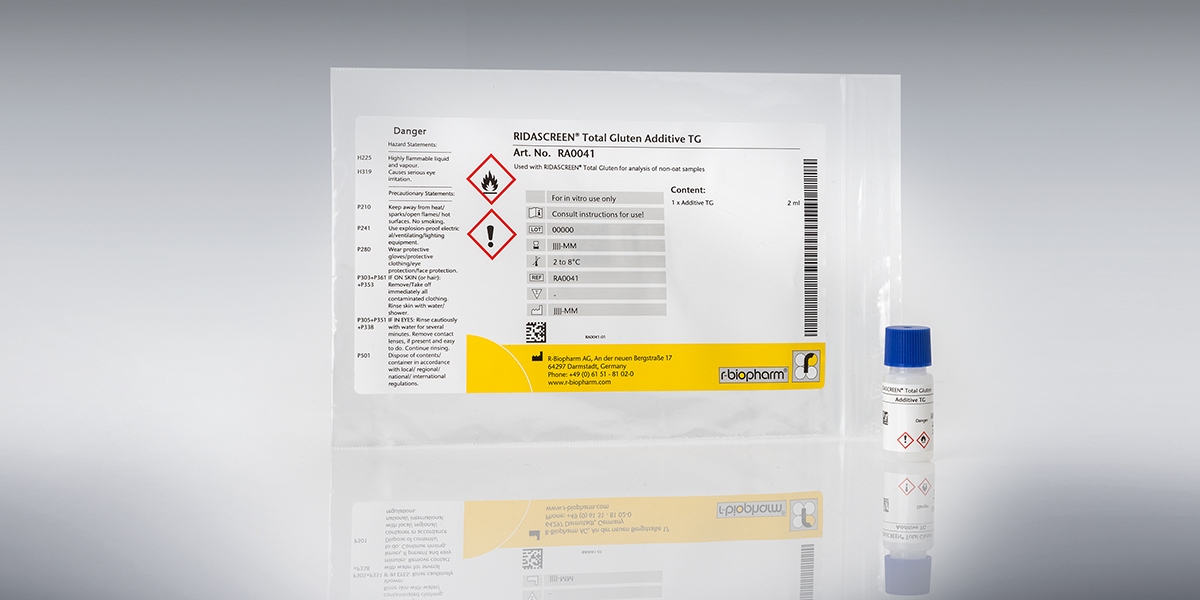
Recent news in Food & Feed Analysis
- Home
- /
- Gluten analysis explained: 10...
Gluten analysis explained: 10 questions and answers you should know

Codex standard, AOAC certification, R5 or G12 antibody: What does really matter in gluten analysis? We have collected 10 questions about gluten analysis that everyone in the food industry should be able to answer. How many can you easily answer?
1. Why should I test food for gluten?
Food allergies and intolerances are increasing worldwide. About 1 % of the population suffers from celiac disease. In addition, many people must avoid gluten due to wheat allergy or non-celiac gluten sensitivity – and more and more consumers choose to renounce gluten in the course of a health trend. The demand for gluten-free foods is increasing. Consumers must be able to rely on the information given on the list of ingredients – and this will only be possible if manufacturers test their products.
2. What is the legal situation?
In order to protect consumers, allergenic ingredients must be labeled – which also includes cereals containing gluten. This is defined in the EU regulation No. 1169/2011 and applies to prepacked food as well as unpacked food in restaurants or bakeries. In addition, the EU has defined limit values concerning the declaration as „gluten-free“ and “very low gluten”. The statement „May contain traces of gluten“ is a voluntary label and not regulated by law.
↗ Further information on relevant regulations
3. When am I allowed to use the „gluten-free“ label?
The internationally acknowledged „gluten-free“ symbol (the crossed-out ear) is a protected trademark. Licences are allocated by the umbrella organization of European celiac associations (AOECS). Manufacturers who want to sign a license agreement must meet high production standards and carry out regular checks.
4. What role do antibodies play in gluten analysis?
The most common methods for detecting gluten in food are antibody-based systems such as ELISA. If the sample contains a specific protein, the antibody included in the test system will react with it and a color change can be observed. The specificity of the antibody towards the particular protein is decisive for the quality of the test result. Gluten consists of several proteins (prolamin and glutelin, referred to as gliadin and glutenin in wheat), therefore it can be detected using several antibodies. The best known antibodies for gluten analysis are R5 and G12.
5. How important is an AOAC certification?
Validation is essential to ensure correct results. There are multiple organizations conducting validation of methods for food analysis; perhaps the most important one is AOAC, a globally recognized, independent association of hundreds of scientists. The AOAC has two programs by which methods are evaluated and approved: AOAC-OMA and AOAC-RI. The „Official Methods of Analysis“ (AOAC-OMA) are a collection of methods which are rigorously tested and scientifically considered as suitable for the respective analytical purpose. Using these official methods provides assurance to laboratories that their results are reliable. For gluten analysis, RIDASCREEN® Gliadin and RIDASCREEN® Gliadin competitive are certified as AOAC-OMA. The AOAC-RI program certifies that a method performs according to the manufacturer’s documented claims.
6. Which analysis method is officially recommended?
When choosing an analysis method, laboratories often follow the official recommendations of the Codex Alimentarius. Jointly developed by FAO and WHO, this collection of food safety standards is globally recognized and the basis for many national laws. In its current report, the Codex Committee recommends an ELISA test based on the R5 antibody for gluten analysis (e.g. RIDASCREEN® Gliadin).
↗ Further information on RIDASCREEN® Gliadin
7. What is the right analysis method for processed food?
For most foodstuffs, a sandwich ELISA based on the R5 antibody is the right choice. However, some foods cannot be analyzed correctly with this method. During fermentation or hydrolysis, intact prolamin molecules are degraded (partially or entirely) to short peptide fragments which cannot be detected by a sandwich ELISA. For fermented or hydrolysed food such as beer, syrup, malt extract, sourdough or soy sauce, it is therefore recommended to use a competitive ELISA (e.g. RIDASCREEN® Gliadin competitive).
↗ Further information on RIDASCREEN® Gliadin competitive
8. Which extraction method should I use?
Extraction of gluten is a decisive step in gluten analysis. There are two possible extraction buffers: ethanol and the patented „Cocktail“ solution developed by Prof. Dr. Mendez. The choice of the extraction buffer depends on the matrix and the employed analysis method. The relevant recommendation can be found in the test kit insert.
9. How much of a problem is contamination?
When production plants or restaurant kitchens handle gluten-free food as well as gluten-containing food, the risk of contamination is high. Even very small amounts of gluten can trigger symptoms in some patients. Allergen management is crucial in order to avoid contamination of gluten-free products. Key measures include thorough cleaning of all working surfaces and tools as well as separate storage of gluten-free and gluten-containing food, among other things.
10. How do I verify that my production line is free from contamination?
A good method to ensure that all work areas and equipment have been cleaned properly, is a lateral flow test – an antibody-based test in strip format. For allergen management, easy-to-use swab tests are available that indicate the presence of gluten residues within just a few minutes. An example of this is the RIDA®QUICK Gliadin, the only gluten test strip that is allowed to use the R5 antibody.



